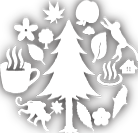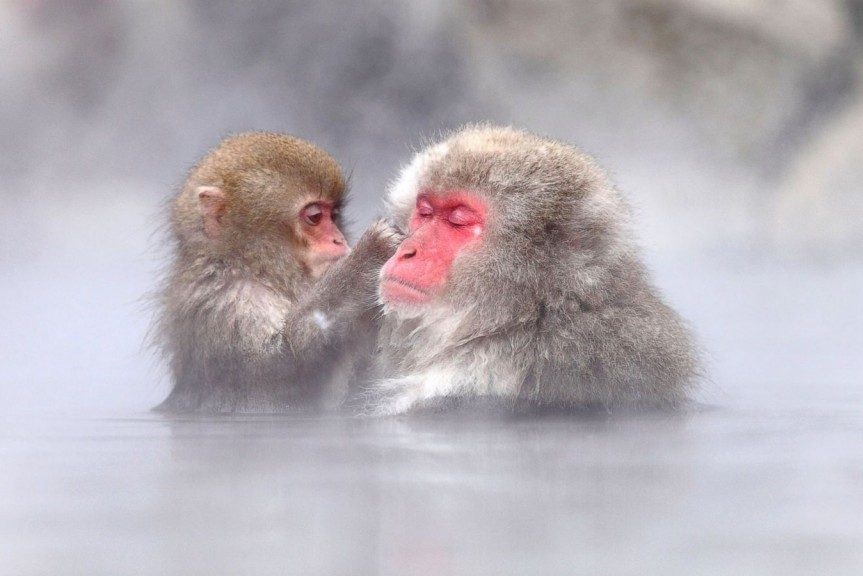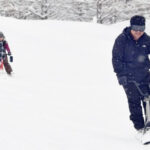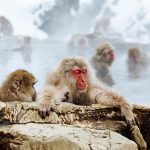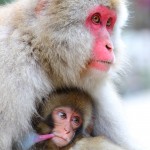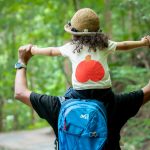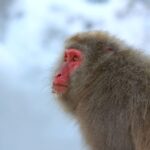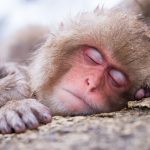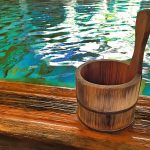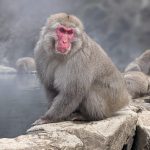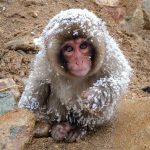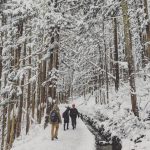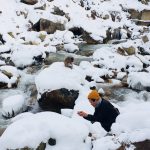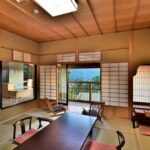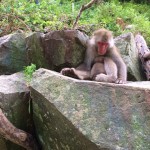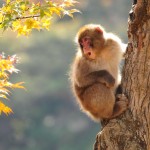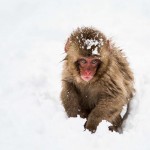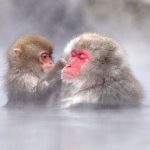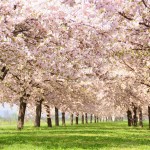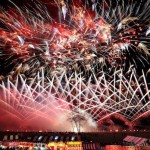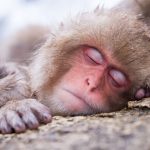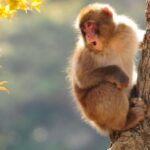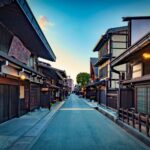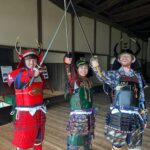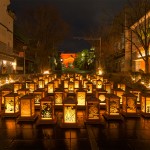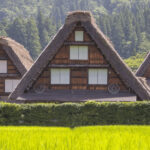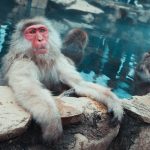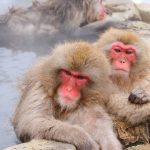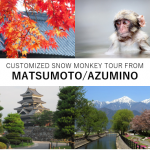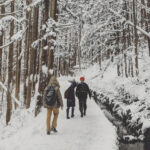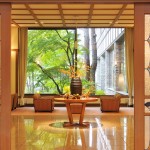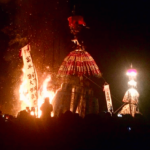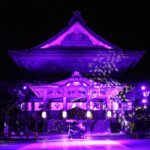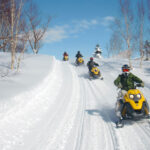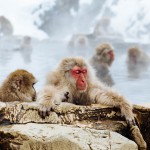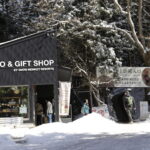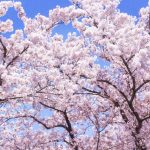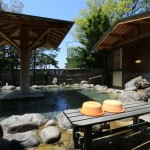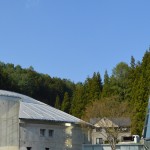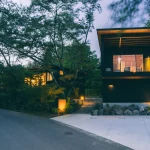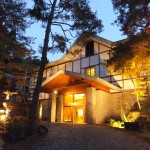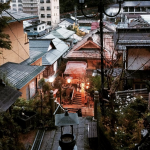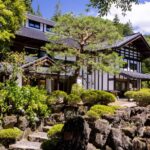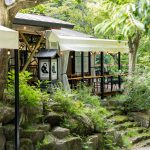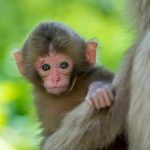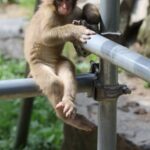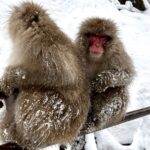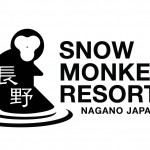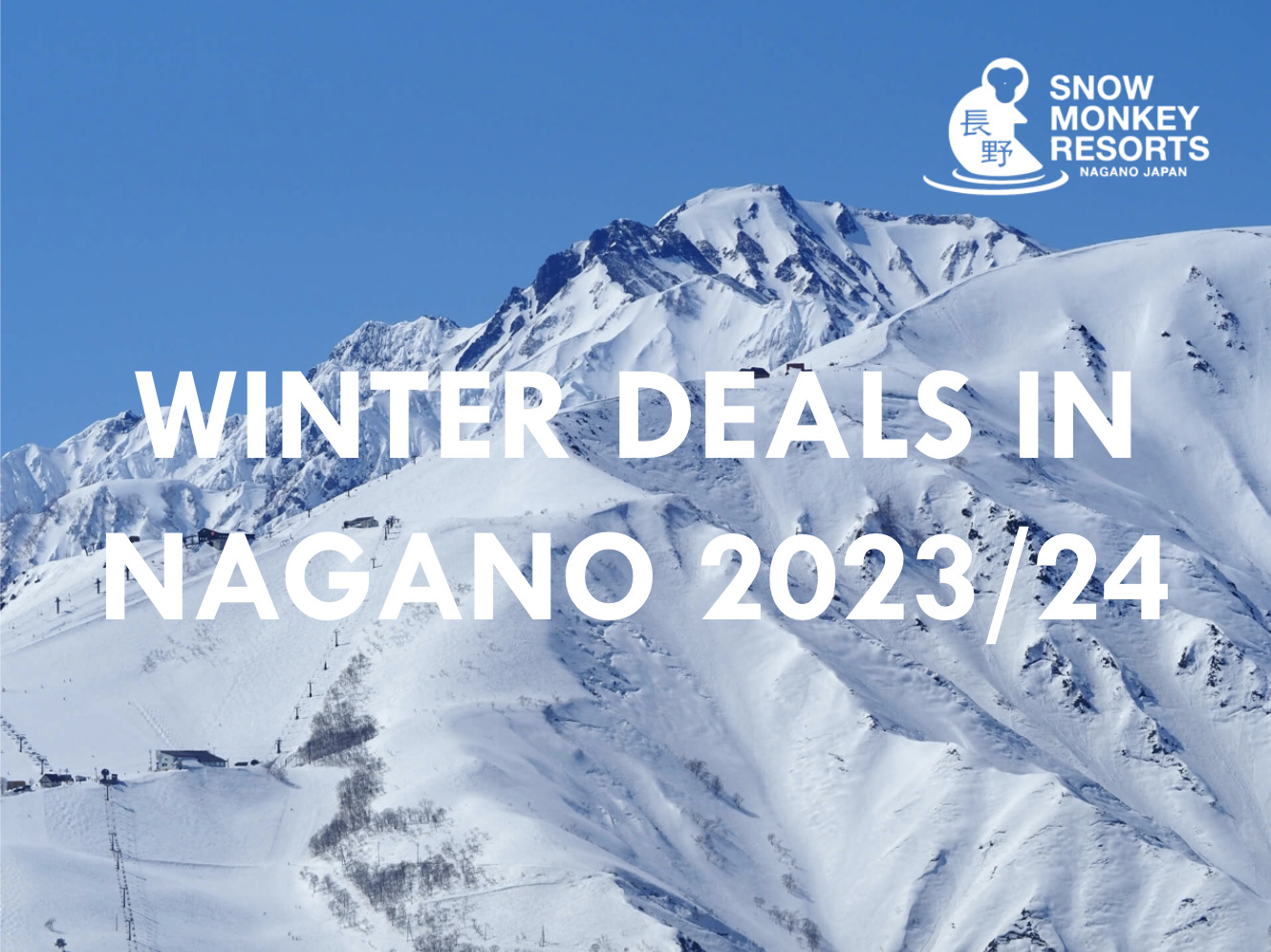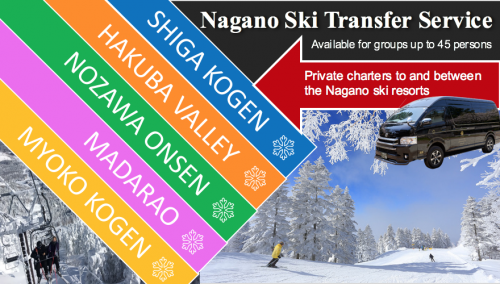Spring (March-May) at the Jigokudani Monkey Park
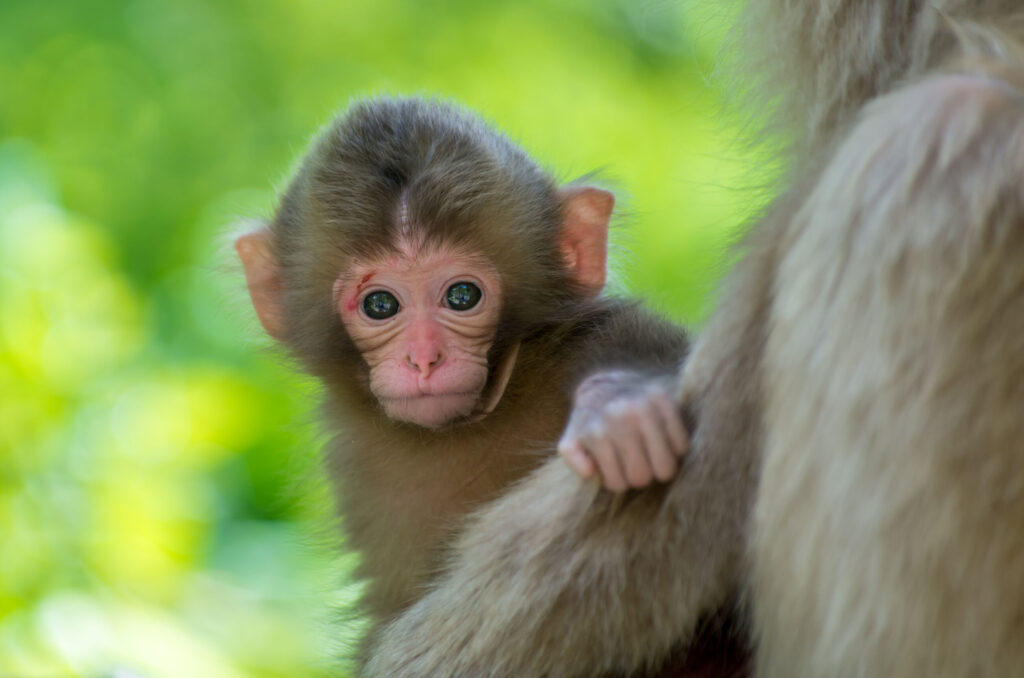
As the weather warm-up in April, and Nagano escapes its long, cold winter, spring offers lots of reasons to visit the Jigokudani Monkey Park. It is a time of renewal and new beginnings as the region’s cherry blossoms bloom in April and the park welcomes the newborn babies for the season. On this page you will find the following information:
— Recommended Activities in Spring
— Tours and Charters to the Monkey Park
— 25 Things to Do Around the Park & Where to Stay
Nagano’s spring comes a little than many regions of Japan, as the snow slowly starts to melt from late-March into April. As it does, some of Nagano’s most iconic destinations including Kamikochi, the Tateyama-Kurobe Alpine Route, and the Nakasendo Trail become accessible again making it an ideal season to visit the park in combination with these and other destinations.
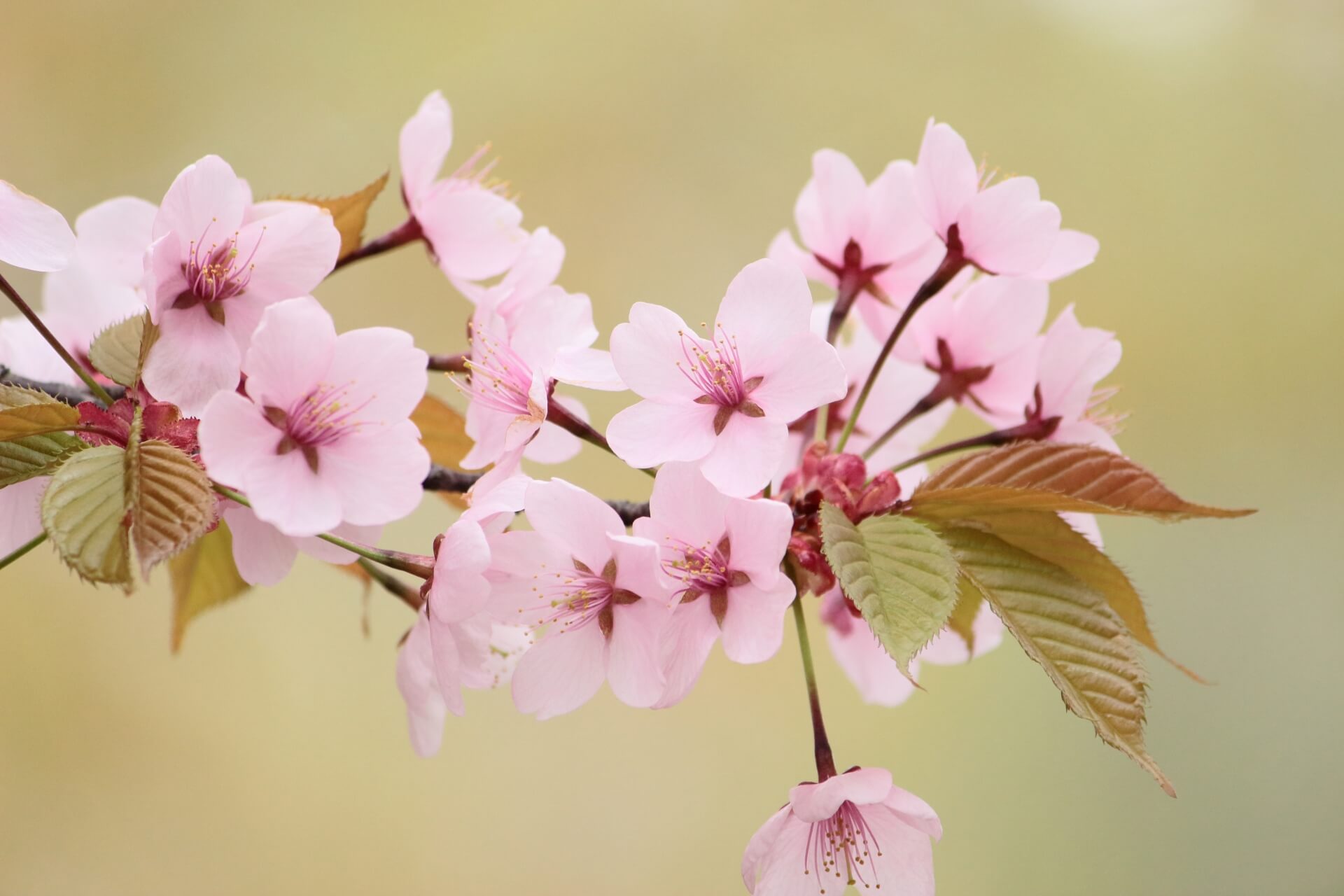
For information regarding opening times, entry tickets and access please refer to our ‘Snow Monkey Park Information’ page, while our ‘The Snow Monkey FAQs’ page answers the most common questions when planning a visit. For a glimpse of what to expect in spring, our monthly capture blogs capture some of the typical monkey antics: March 2022 / April 2022 / Spring 2023 Recap
WHAT TO EXPECT IN SPRING
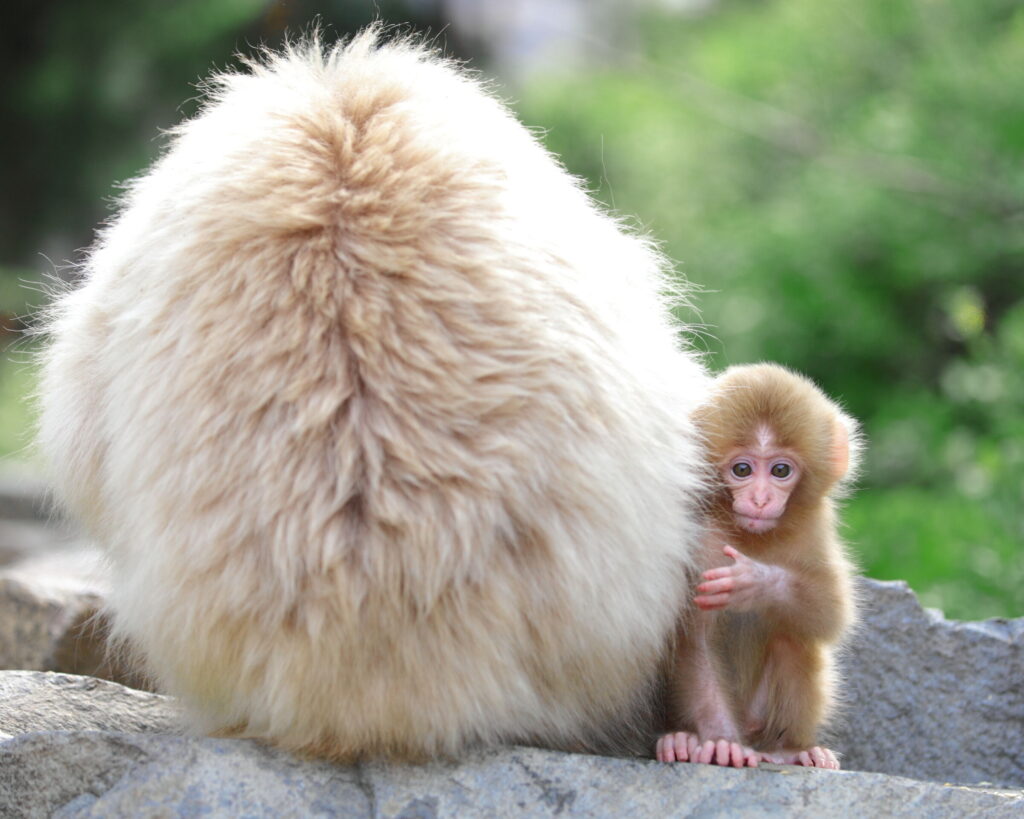
April to May is a fantastic time to visit the park. With the snow mostly gone, warm days encourage new growth in the park, which gradually turns lush green through may. Warmer temperatures also mean that the monkeys are more active, scurrying about the park and forest seemingly happy that the cold of winter has now gone.
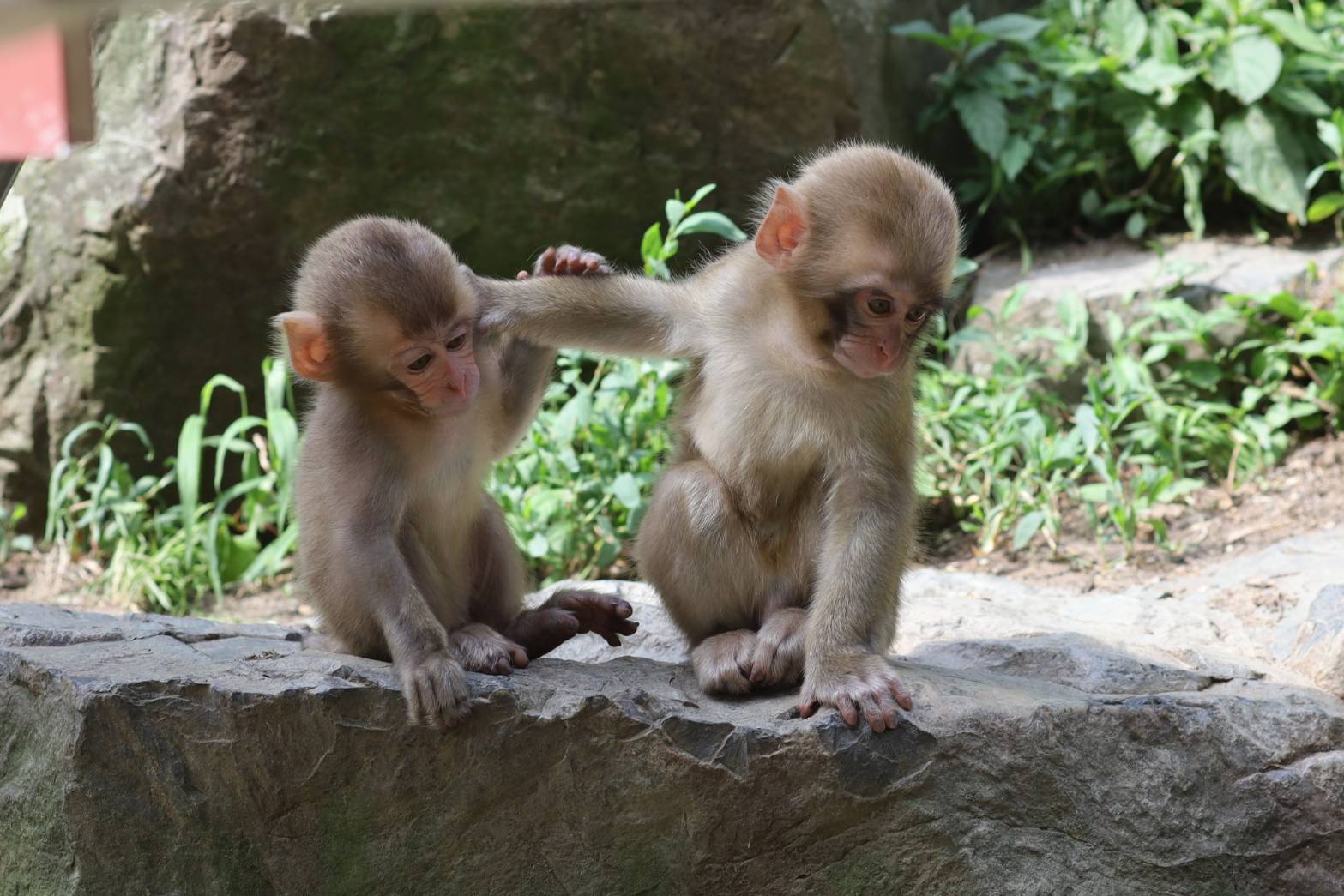
The monkeys behavior is reliable however from late-April onward, expectant mothers will give birth. Prior to doing so, they retreat into the mountains where they give birth away from prying eyes. Once comfortable again, the mums will return with their babies, often after around a weeklong absence. This means that total monkey numbers can sometimes be less in spring but it isn’t something to worry about. There should still be plenty of them in the park. The weather should be warm and the trail and park will be free of snow and ice, Nevertheless, good quality footwear is recommended and it is always worth it to be prepared for the walk to the park with merchandise and English-language information available at the Snow Monkey Resorts Gift & Info Shop.
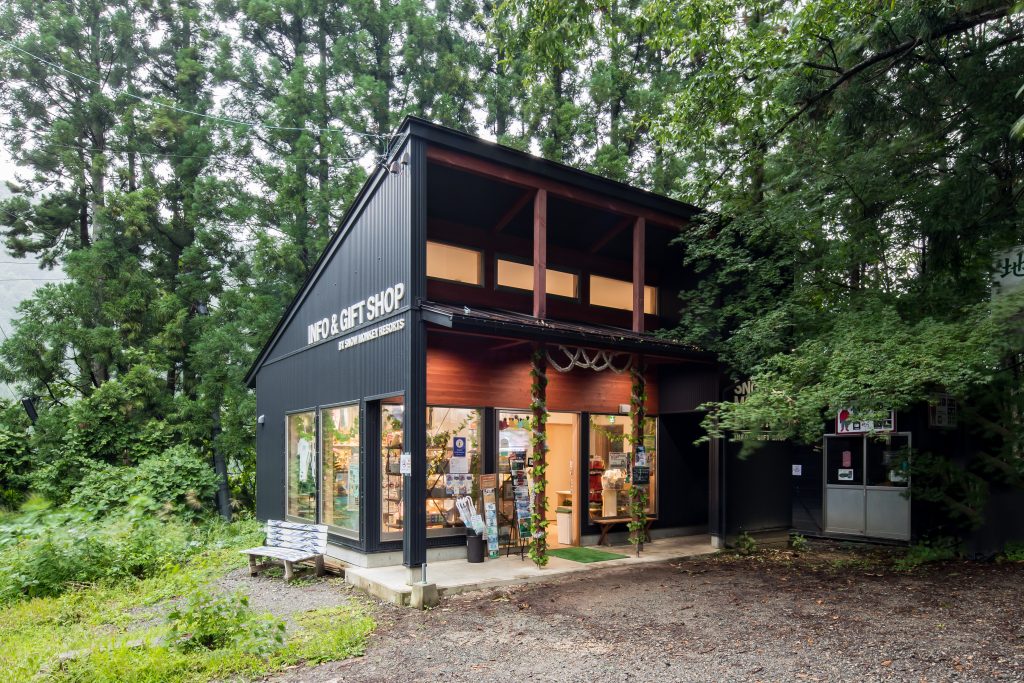
Just down from the trail entrance and the Info & Gift Shop, Enza Cafe is open throughout the year including in spring. It serves a tasty menu of Japanese and Western favourite and offers both indoor and outdoor seating in which you can comfortably sit back, relax and take your time at the park.
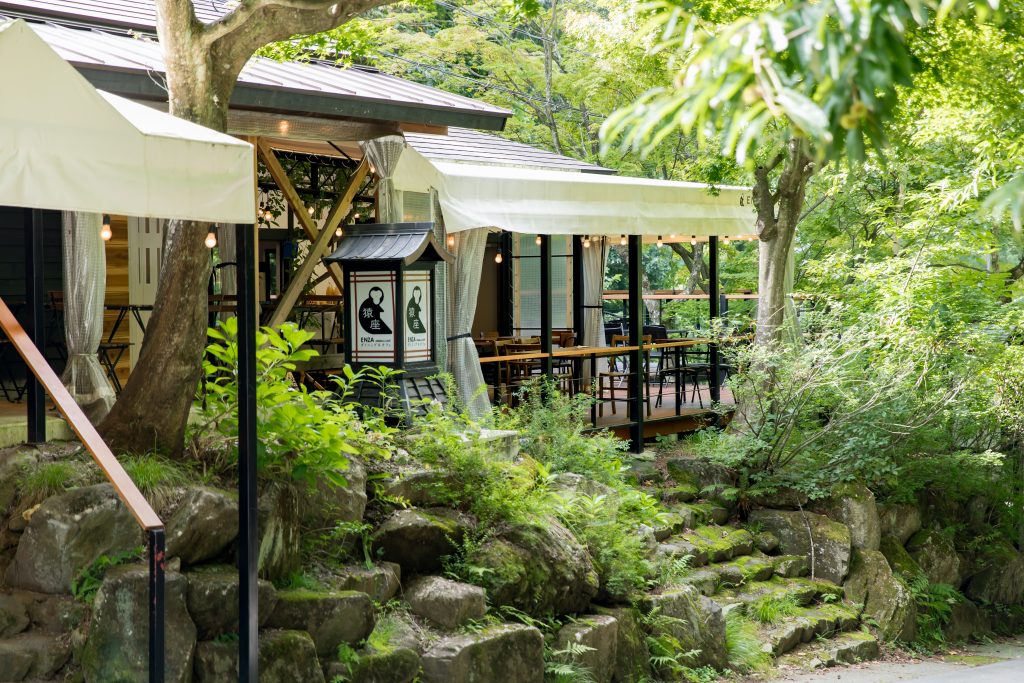
Operating by reservation and located only a little further down the trail (near the Nagaden Express Bus Stop), Hotarutei is another recommended lunch option nearby the monkey park and offers classy Japanese Cuisine in a 170 year old, carefully renovated farmhouse.
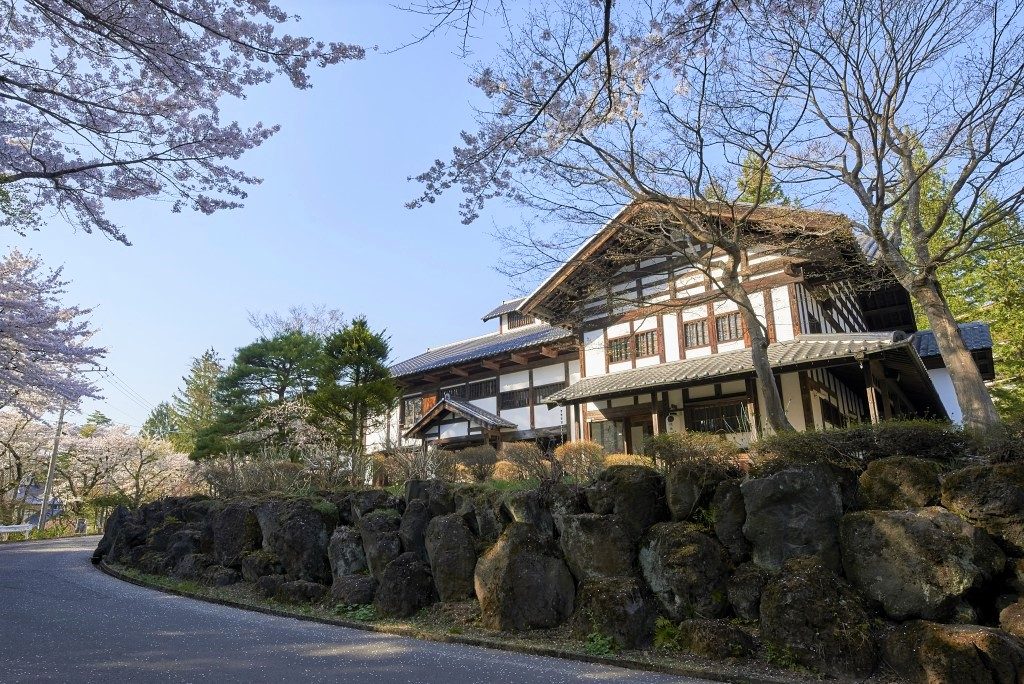
The weather will typically go up and down through spring. However one thing is certain – peak season at the park is over and visitor numbers will be much lower. Daytime temperatures are likely to between 10°C and 20°C but be prepared that it can suddenly dip, with the possibility of around 5°C. For information regarding other seasons in the monkey park, please refer our ‘Snow Monkey Park Throughout the Year’ page.
RECOMMENDED ACTIVITIES IN SPRING
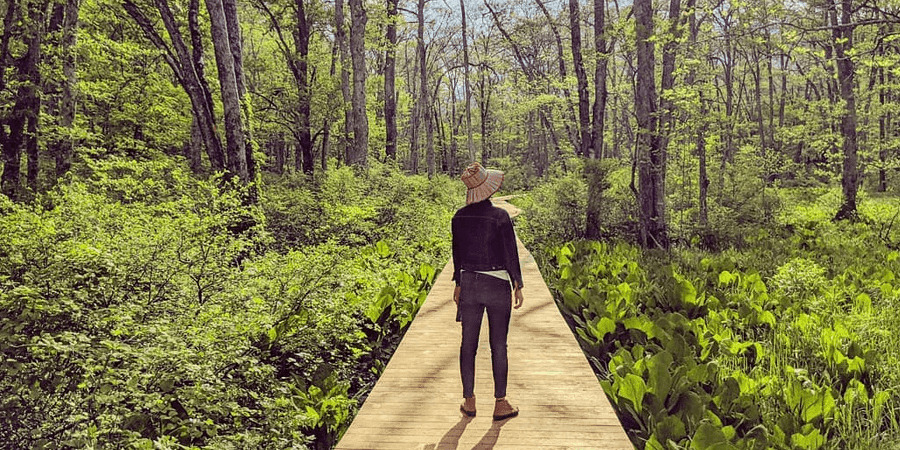
With the snow melting and the mountains and forests of Nagano opening-up, spring is a great time to explore the region at one of the quietest times of year. But of course, you can’t talk spring in Japan without first discussing:
1 / CHERRY BLOSSOMS IN NAGANO
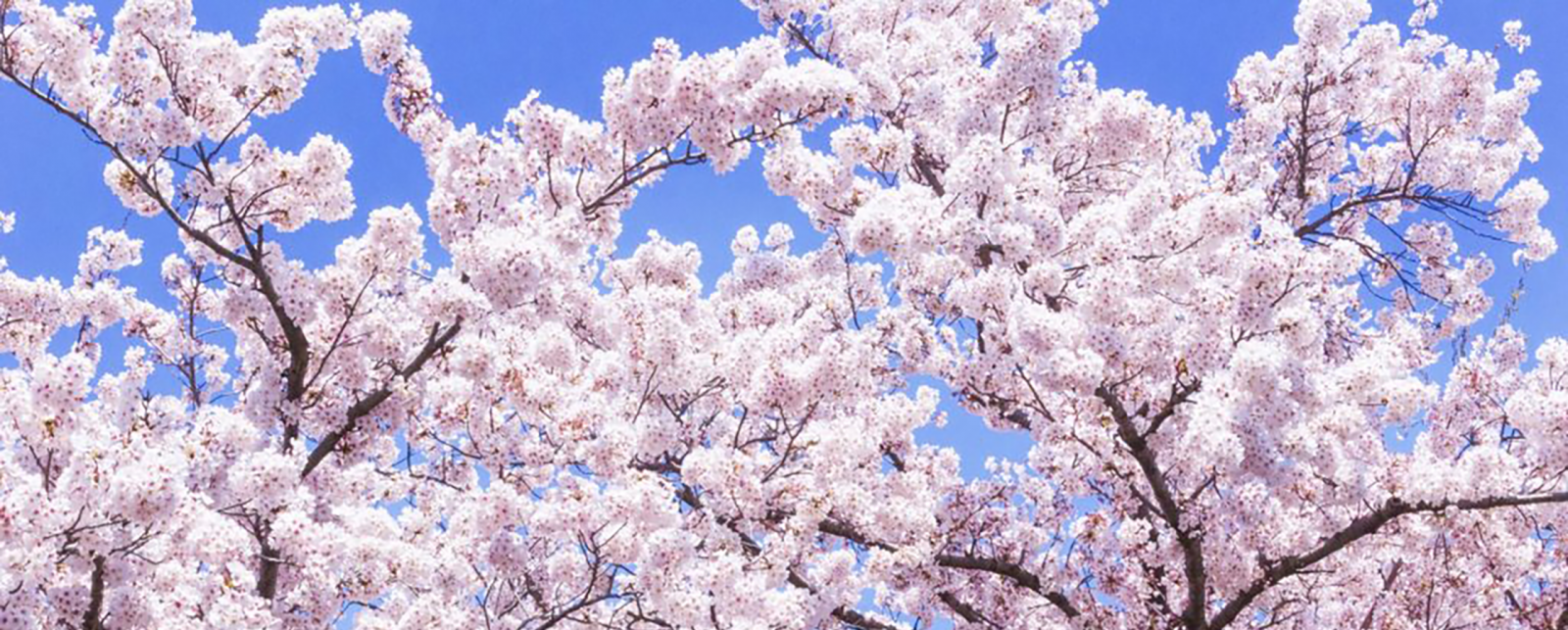
1 Day Tour
| [Spring Only] 1-Day Tour: Snow Monkeys & Cherry Blossoms in Nagano | |
|
| |
| Period | April |
| Time | 09:35 – 17:30/18:30 |
| Meeting Place | Hotel Kokusai 21 Nagano Station |
| Adult Rate | ¥17,800 |
| Child Rate | ¥11,000 |

OK… there’s simply no other place to start than Japan’s spectacular cherry blossoms. Known as ‘sakura’ in Japanese, the blossoms of Nagano bloom later than Tokyo, typically from around the first week of April. While it varies between years, visitors can expect the peak bloom – called ‘mankai’ in Japanese – from the first to middle weeks of April. Home to several famous destinations and countless local flower-viewing sites, Nagano is an ideal destination for visitors wanting to experience hanami away from the crowds of Kyoto and Tokyo.
There is one problem with Cherry Blossoms, however – they are unpredictable. The time at which the blossoms reach peak is different each year, and also depends on the location and variety of tree. Luckily, for those who partake in our tour above, we do the hard work of finding a suitable place to view the blossoms and take you straight there, including to spots which are hard to reach and not well known outside the local area.
2 / SNOW WALLS OF TATEYAMA-KUROBE ALPINE ROUTE
1 Day Tour
| [Spring Only] 1-Day Tour from Nagano: Snow Walls of Tateyama-Kurobe Alpine Route | |
|
| |
| Period | April to June |
| Time | 07:50/08:15 – 18:00-19:00 |
| Meeting Place | Hotel Kokusai 21 Nagano Station |
| Adult Rate | ¥30,000 |
| Child Rate | ¥23,800 |

Sitting over 3000 meters above sea level, Mt Tate is one of Japan’s highest mountains. One of several peaks in the North Japan Alps that ascend to over 3000 meters, the dramatic alpine landscape is subject to heavy snow through winter. Often referred to as the ‘Roof of Japan’, the region is accessible from mid-November until April at which time, humans venture back and with great effort and ingenuity, re-carve the road from Bijodaira to Murodo Station.
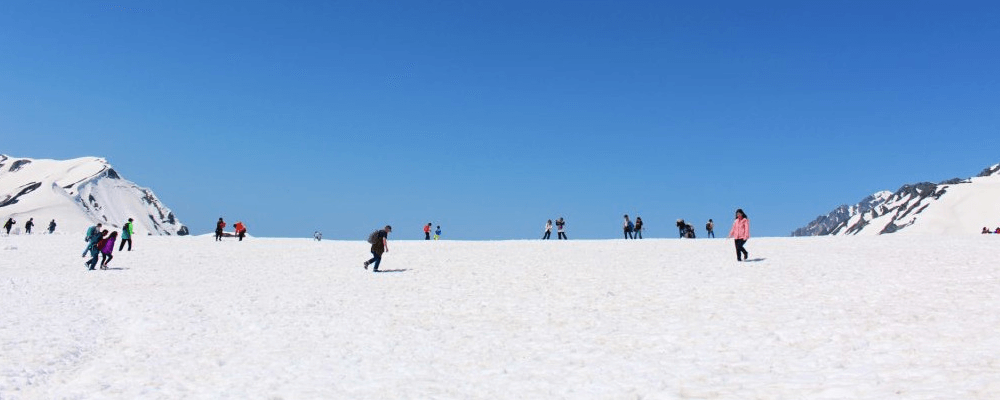
In doing so, the grand Snow Walls of Tateyama-Kurobe are carved anew. Towering up to 20 meters in height, the vast walls dwarf not only people but also the large coaches that transport them to and from Murodo Station. Although the Snow Walls are only one visible for a matter of months, they are without doubt the most famous attraction of the Tateyama-Kurobe Alpine Route – one of Japan’s most iconic sights.
3 / DISCOVER TOGAKUSHI
1 Day Tour
| 1-Day Togakushi Legends Tour: Hands-on Soba Noodles, Ninja Village, and Hidden Shrines | |
|
| |
| Period | July to November |
| Time | 09:35 – 17:20 |
| Meeting Place | Nagano Station Information Board |
| Adult Rate | ¥19,800 |
| Child Rate | ¥11,000 |

Sitting quietly in the mountains bordering Nagano City, Togakushi is home to some of Japan’s most important Shinto shrines set among a beautiful forested landscape. The five major shrines that make-up the Togakushi complex are spaced-out at intervals through the forest and set against the dramatic background of mountains rising above. Accessible via well-maintained walking tracks, Togakushi continues to draw Shinto practitioners and nature enthusiasts who revel in its tranquillity, beauty, and purity.
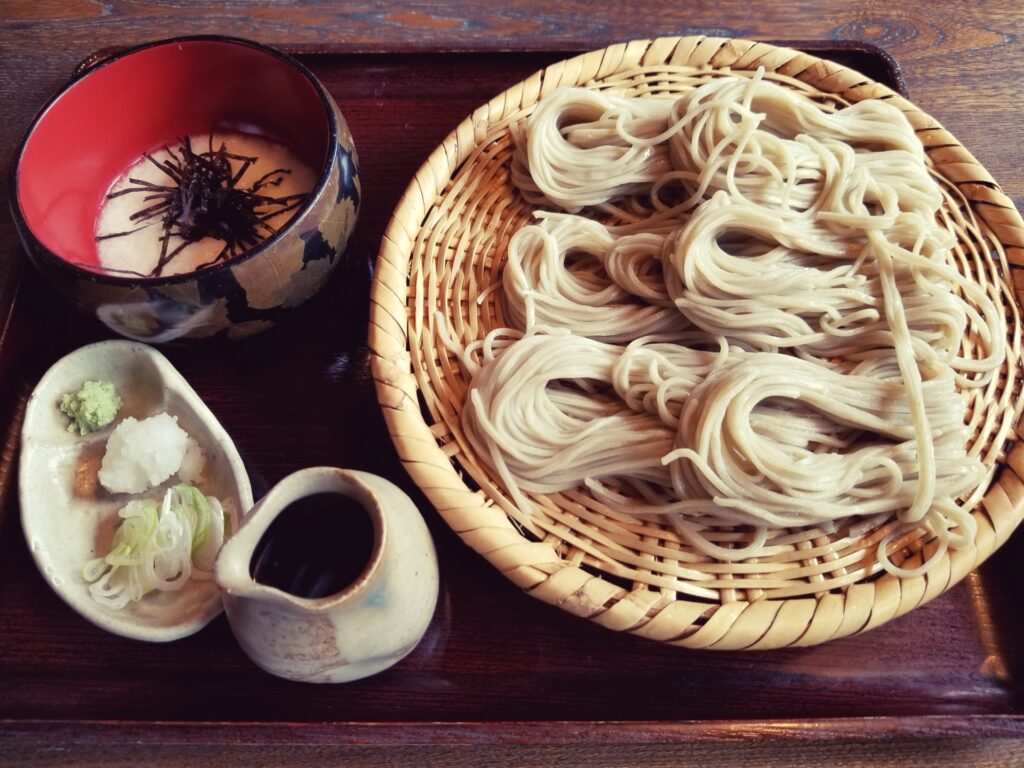
On the literal doorstep of the city, Togkuashi is also home to the Togakure ninja school, Togakushi Ski Resort and famous for its ‘soba’ (buckwheat noodles), traditional bamboo craft and stunning autumn leaves making it an ideal destination when planning at day-trip from Nagano.
4 / EXPLORE KAMIKOCHI
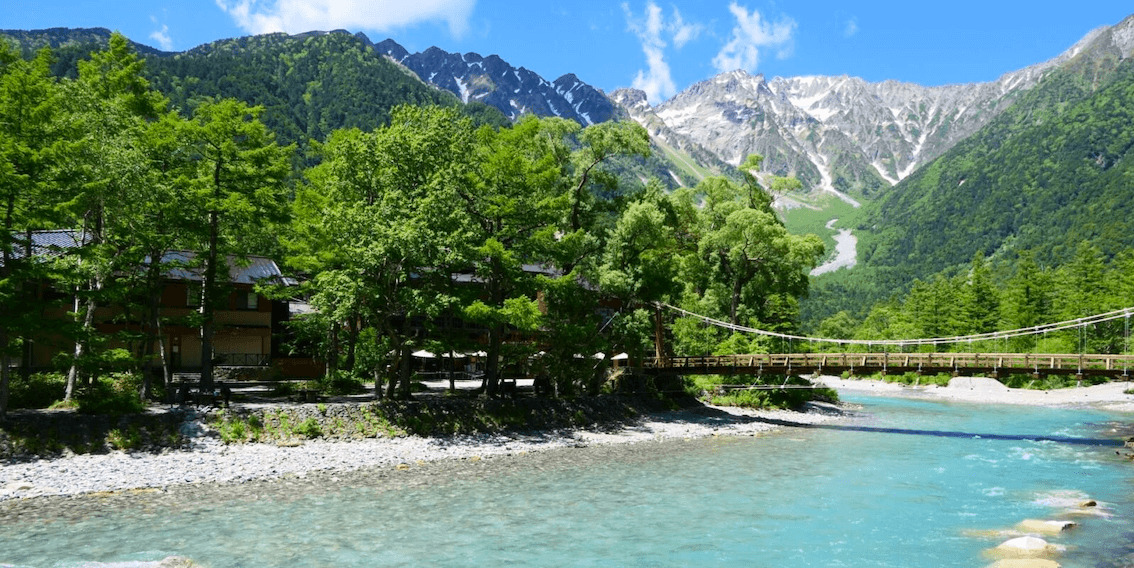
1 Day Tour
| 1-Day Tour from Nagano and Matsumoto: Kamikochi & Matsumoto Castle | |
|
| |
| Period | April to November |
| Time | 08:15 – 18:30 |
| Meeting Place | Nagano Station Matsumoto Station |
| Adult Rate | ¥23,800 |
| Child Rate | ¥11,900 |

Often described as one of the country’s most beautiful natural treasures, Kamikochi sits high in the Hida Mountains – Japan’s highest mountain range. Also known as the ‘Kita Alps/Mountains’ or ‘North Japan Alps[, the mountain range is one of three – along with the Kiso and Akaishi Mountains (or Central and Southern Japan Alps) – which make-up Japan’s mountainous heartland.
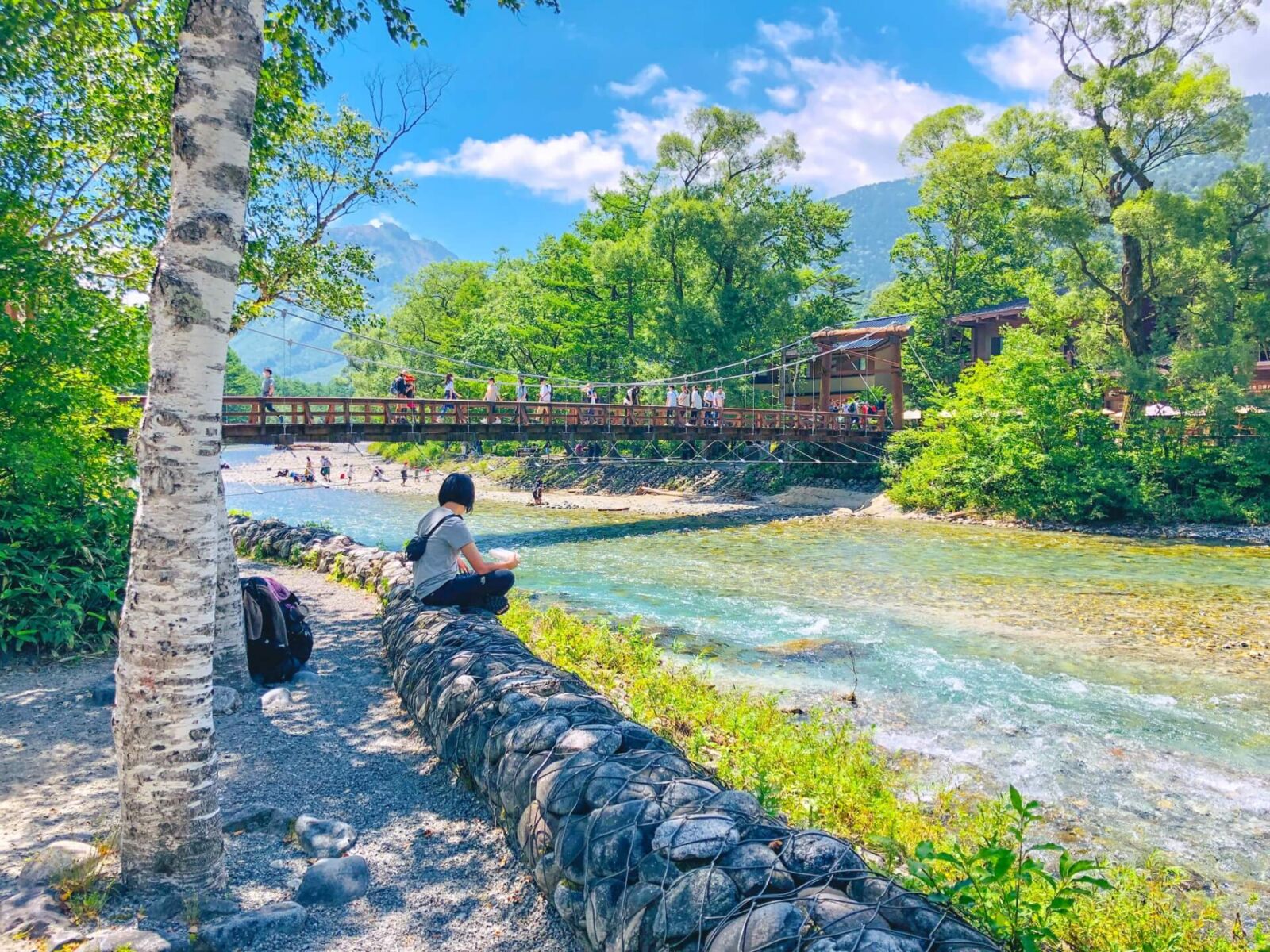
Nestled high in the Hida Mountains, Kamikochi is found at the southern tip of the Chubu Sangaku National Park. A true alpine oasis sitting beneath the high peaks of Mt Yari (3180m), Mt Hotaka (3190) and Mt Yakedake (2455m), the valley follows the Azusa River and is home to diverse range of flora and fauna. Hiking trails span-out along the valley floor and follow the river as it meanders north to south, before more advanced hiking and climbing routes ascend to the mountains above. Truly one of Japan’s most remarkable natural landscapes.
TOURS AND CHARTERS TO THE MONKEY PARK
1 Day Tour

| 1-Day Tour: Snow Monkeys, Zenko-ji Temple & Sake in Nagano | |
|
| |
| Period | All Year Round |
| Time | 09:35 – 17:35 |
| Meeting Place | Nagano Station Hakuba (winter only) |
| Adult Rate | ¥17,800 |
| Child Rate | ¥11,000 |

Operating year round and offering a full day itinerary including sake tasting, lunch, a visit to the historic Zenkoji Temple and of course a guided tour of the Snow Monkey Park, this day tour is the best option for anyone looking to explore Nagano with ease. Instead of worrying about catching trains or buses, you can instead ride on our tour bus with a guide who will make sure to handle all of the difficult parts for you.
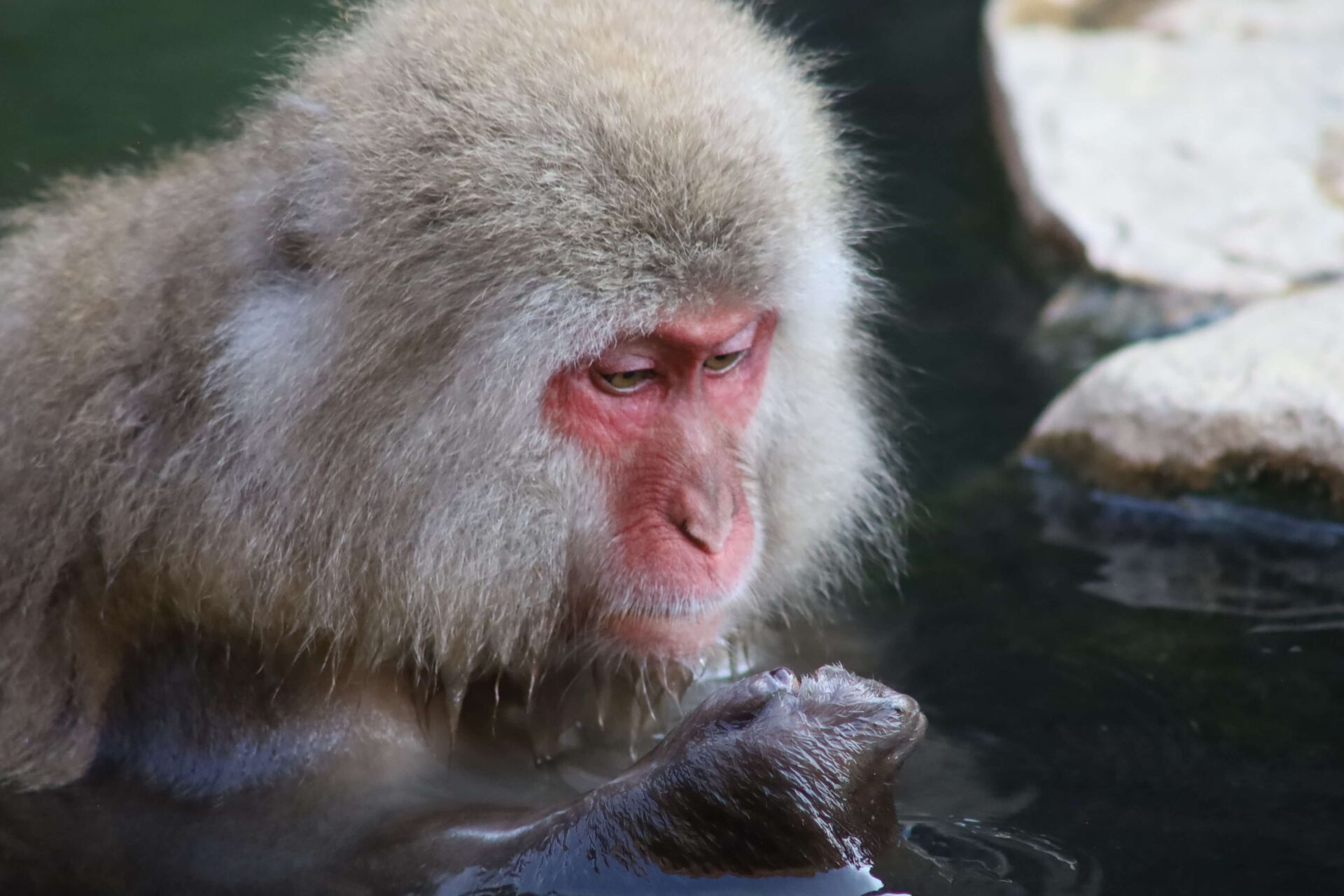
Possible as a day trip from Tokyo, those looking to see a different side of Japan will definitely enjoy themselves. In Spring, when the number of guests at the park has dropped off and the monkeys are at their most playful, you will have a chance to enjoy the antics at your own pace while asking any questions you think of to your helpful guide.
Private Tour
| [START FROM NAGANO CITY] Private Snow Monkey Tour | |
|
| |
| Period | All Year Round |
| Time | 09:00 to 17:15 ~ 18:30 |
| Meeting Place | Any location in Nagano City |
| Price | ¥122,000 ~ / group |

For guests searching for a more personalized experience, we also offer private tours from a number of locations including Nagano City and surrounding ski resorts. For a full list, please look at our Snow Monkey Park Tour Page.

We also offer charters to the Monkey Park (and other destinations around Central Japan) for travelers in need of transportation only.
25 THINGS TO DO AROUND THE PARK & WHERE TO STAY
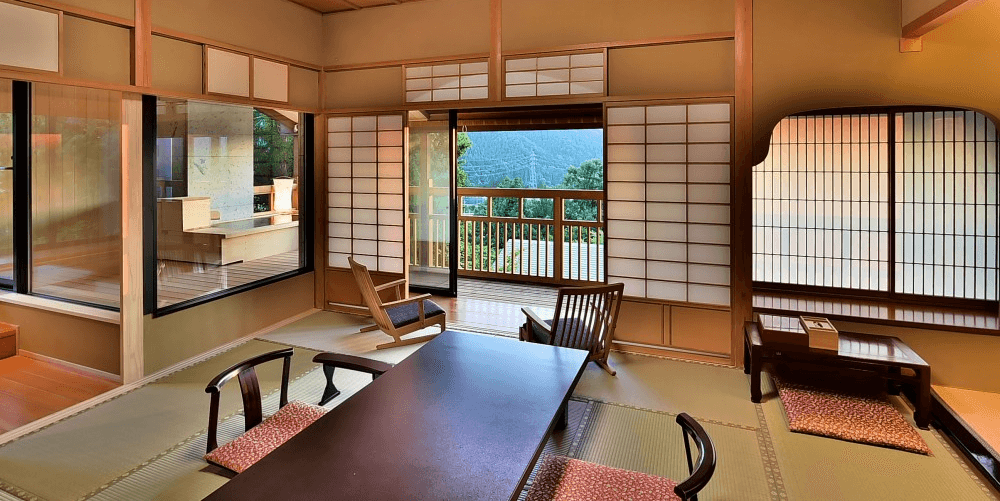
Often referred to as the Snow Monkey Park, you’d be forgiven for thinking the park is only open and the monkeys only venture there in winter. While it’s true they are most famous for their winter antics, the monkeys come to the park all year round and there are just as many reasons to visit in spring, summer and autumn. Located in the beautiful rural enclave of Yamanouchi and within easy reach of Nagano City, visiting the park can be easily combined with plenty of nearby destinations and activities, as a day-trip or multi-day visit. Our ’25 Things To Do Around The Jigokudani Monkey Park & Where To Stay’ page has lots of great tips and suggestions of what’s on offer throughout the year.


